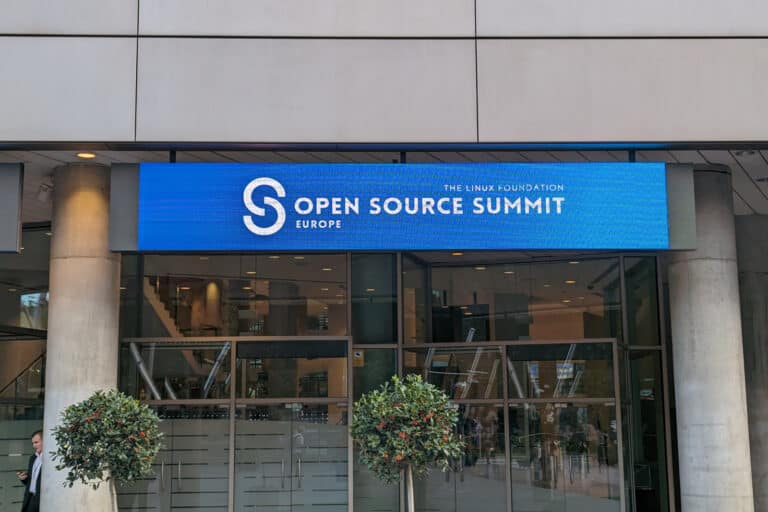Arm, Fujitsu, Google Cloud, Imagination Technologies, Intel, Qualcomm, and Samsung participate in new Unified Acceleration Foundation. Together, they should make it easier for applications to perform optimally in heterogeneous environments.
One of the more important announcements at this week’s Open Source Summit, as far as we are concerned, is the creation of the Unified Acceleration (UXL) Foundation. This is a foundation hosted by the Linux Foundation’s Joint Development Foundation.
To learn more about the new UXL Foundation, we had a chat with Rod Burns at Open Source Summit Europe, which we’re attending this week. He serves as VP of Ecosystem for Codeplay Software. Also, he has been playing a role in standards in the open source world for quite some time, with the oneAPI initiative being a prime example. He does community outreach around new standards, to increase adoption.
Writing software for heterogeneous environments
The UXL Foundation is fundamentally an evolution on oneAPI, an open source standard that Intel has adopted. The idea behind oneAPI is that it allows developers to develop applications for heterogeneous environments. By this we mean environments that use hardware from different vendors, as well as different architectures.
According to Burns, there are quite a few challenges at this point for developers. It is not easy to build an application that works well on an infrastructure stack where AMD, Intel, Nvidia, but also, for example, Arm-based hardware is used. With oneAPI, this is basically possible. Burns cites as examples some supercomputers in the U.S. (Frontier, for example). These use the oneAPI standard. In Europe you can think of LUMI in Finland, but also the Leonardo supercomputer in Bologna is built along the principles of oneAPI. As a final example, Burns mentions GROMACS, a software package that enables researchers to analyse how molecules behave themselves.
Ultimately, the mission of oneAPI and of the UXL Foundation can be put simply, we hear from Burns: “The ultimate goal is to get developers to stop thinking about the underlying infrastructure.” Of course, this must be accompanied by applications that perform better than they do now. Otherwise, it hasn’t made much sense.
In general, the UXL Foundation is currently focusing primarily on HPC environments, especially supercomputers. That’s where the need is greatest, is the idea. That’s where you most often encounter the combination of CPUs, GPUs, FPGAs/DPUs and accelerators. Looking toward the future, however, Burns certainly sees applications elsewhere. He is specifically talking about Edge/AI applications in this regard.
UXL Foundation provides Open Governance
As far as we understand it, oneAPI was and is already quite successful. When a party like Intel gets involved, at least you’re doing something right. So why take this next step anyway? Burns frequently talks about Open Governance in our conversation in this regard. In fact, the projects, for example specific libraries that Intel currently manages, will come under the umbrella of the Linux Foundation. That includes managing them according to that foundation’s rules. “Open Governance is very important, we want to do as much as possible in the public domain,” Burns points out.
Burns says the shift of projects from individual companies to the UXL Foundation will begin to increase collaboration between participating parties. It will be easier for Qualcomm and Intel to collaborate through the UXL Foundation than to do so directly, is the thought. In addition, Burns also expects to see more contributors to the projects covered by the UXL Foundation. Parties that were initially reluctant to contribute anything to the project, for example, because Intel was managing it, will now be more likely to do so, he expects. In doing so, the UXL Foundation also makes the projects stronger in breadth and depth.
Announcing the UXL Foundation is only the beginning
With today’s announcement of the UXL Foundation, only the starting gun has been fired. Not much else is known yet, except for the participants you see in the introduction to this story. The real work is just beginning.
Burns immediately admits that they have quite a job ahead of them. He calls it “no mean feat” to get all the parties and projects together in the UXL Foundation. On the one hand, there is the technical challenge. There are so many differences in how the participating organizations deal with fairly basic things like drivers, to name a simple example. Everything has to move toward a single standards-based program.
There is also the challenge of migrating the projects that exist around oneAPI now to the UXL Foundation. This must be done without impacting the communities. This transition will take most of what’s left of 2023. However, the main challenge moving forward, and into 2024, will be compatibility. APIs must work the same regardless of which hardware is the target or source.
At the end of the day, however, it is not a matter of want, but of need. This is where the old open source mantra resurfaces: “Open almost always wins.” Linux is the best example of this. “Linux transformed software development, which is what we are also aiming for with the UXL Foundation,” Burns concludes.
